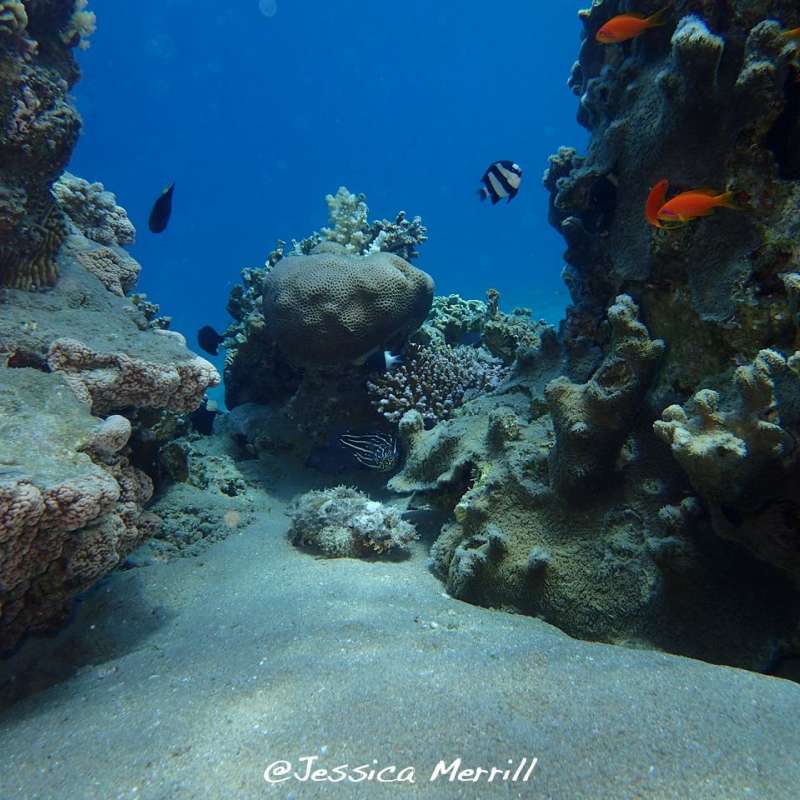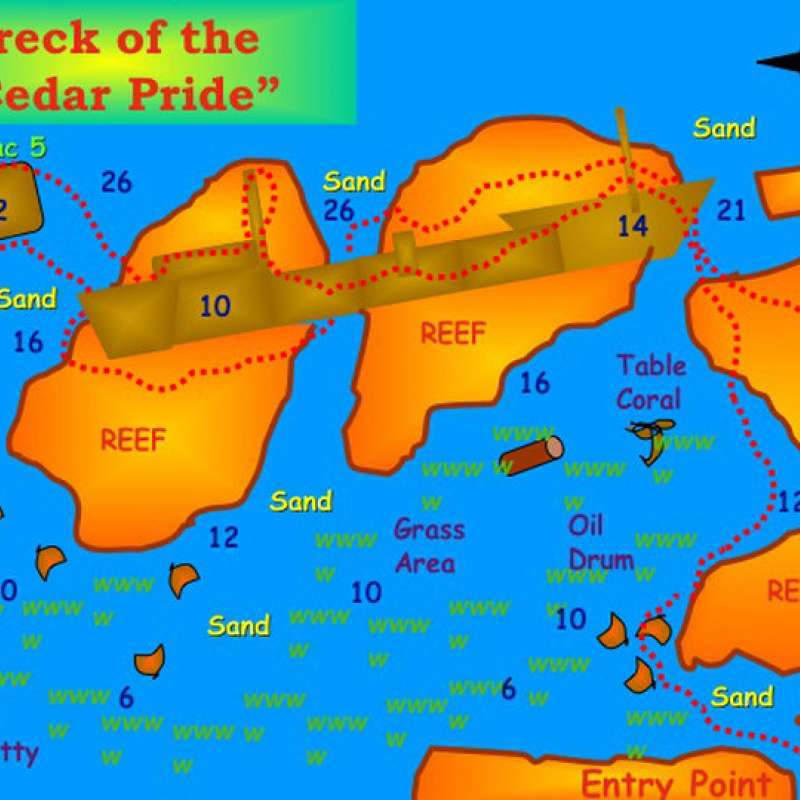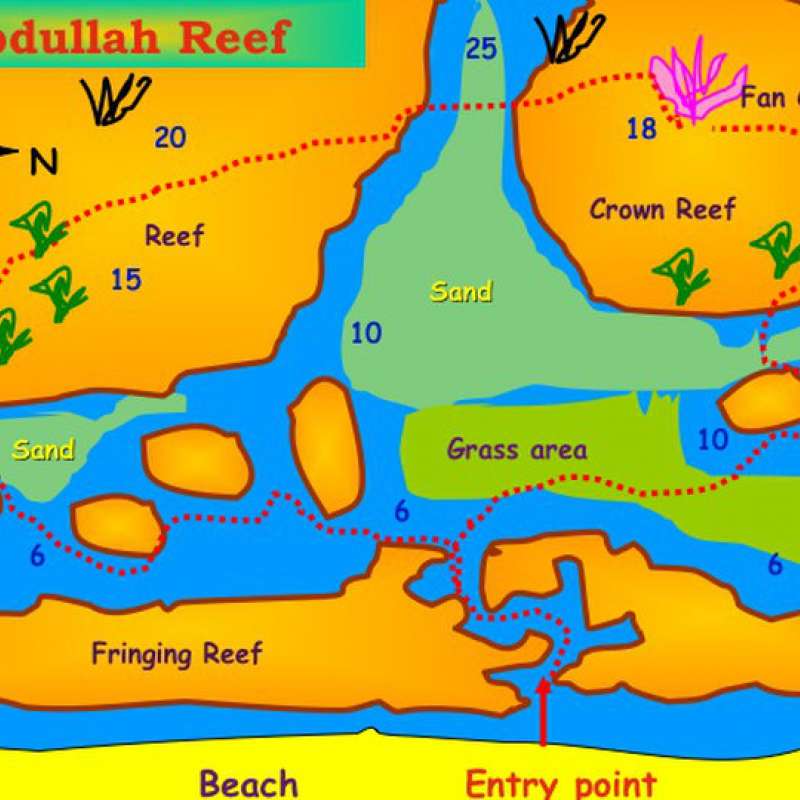Dive Trip Review In the Aqaba South Beach Area, Red Sea
Few bodies of water on earth have as strong a reputation for unspoiled beauty as the Red Sea. With over 1,000 species of invertebrates and 200 species of corals, this inland sea has a bounty of unique life to display...
This is in part due to its extensive shallow reef system, outlet to the Indian Ocean, and nutrient rich Sinai Desert surroundings. Not surprisingly, 1 in 10 fish species found here are located nowhere else on earth!
With so much to see just below the surface, the Red Sea promises action packed dives for scuba enthusiasts of all skill levels.
Some diving resorts in this area have been popular for years, specifically the Dahab and Sharm al Sheikh areas in Egypt. However, just a few hours away in Jordan, divers can escape the crowds and explore some lesser known sites in a beautifully preserved marine park!
Aqaba South Beach Area
We spent the majority of our time diving in the Aqaba South Beach area. Almost every site here can be reached from shore, which makes for a relaxing "dive at your own pace" daily schedule.
Diving with a guide is required here, as you are within the boundaries of the marine park, but taking a divemaster is well worth your money. With the plethora of healthy hard and soft corals and hard to spot wildlife, you will want someone to show you the good stuff! Additionally, the area boasts many deep and technical sites, as well as stunning reefs and wrecks.
We enjoyed the variety of diving environments here, including sandy bottom, soft and hard coral reef, shipwreck, turtle grass, and even a coral farm!
On our first day of diving, we visited Gorgon 1 and 2.
These sites are immediately next to each other, and make an excellent introductory day of diving in the area. Both sites showcase large pinnacles, a shallow sloping coral reef, and many gorgonian sea fans (the sites' name sake). We were treated to many tropical reef fish here, as well as sea turtles. We even spotted a napoleon wrasse off in the distance! There are large schools of lyretail anthias here, which strangely resemble a freshwater goldfish. The coral here is in excellent condition, with no bleaching or signs of disease. We encountered no current, and thought that these twin sites were perfect for the newbie reef diver, or recently certified student.
For our second day of diving, we headed north to the Japanese Garden and Cedar Pride wreck.
The Japanese Garden is a lovely site featuring a large and healthy reef system, as well as a flat and shallow sandy area. We spotted a very large cowtail ray cruising here in the sand, as well as several pipefish hidin the rocks and turtle grass. The site itself is gently sloping, but offers plenty of opportunities to go deep. There is a long series of coral outcroppings and pinacles right around 20 meters where we found a large stonefish! Of all the sites we dove, this was easily the best for photography. The visibility was outstanding, and the natural lighting here was perfect, even without a strobe.
After a short surface interval, we explored the nearby Cedar Pride wreck. This site can get quite deep, so be sure to plan ahead if it will be your second location for the day. Of course there are many routes in and around the wreck that are perfect for more experienced divers, but even a surface exploration is worthwhile. We went for a full penetration, including a few moments in the air pocket! The inside of this wreck presents many specific challenges due to the large populations of lionfish and scorpionfish found here. Divers of all levels should use caution, and never make contact with the wreck itself!
Our final day of diving was spent around the First Bay - South and King Abdullah Reef.
We did encounter some slightly strong currents in this area, but found both sites to be appropriate for beginner to intermediate divers. The entry and exit points here were swarmed by thousands of beautiful and non stinging purple jellyfish, which were initially a bit of a nuissance but ultimately made for great photographs! Apparently this seasonal phenomenon draws snorkelers from all over the Middle East, and typically occurs midsummer just before the south winds begin blowing through the area.
One interesting feature at both of these dive sites is a series of sand channels running through the coral reef. We spotted many unfamiliar blennies and gobies here, as well as several species of pipefish. Though we did not spot any ourselves, these sites are known for octopus and reef shark sightings! The coral heads here are in excellent condition, and more advanced divers will enjoy the numerous squeezes and swim throughs that can be explored in the shallows.
Though it is a bit of a far flung location, Aqaba's south beach area was simply stunning.
With fewer tourists and more unspoiled dive sites than neighboring Egypt or Israel, it is sure to become a hot spot for scuba enthusiasts in the coming years! Thanks to the environmental protection practices already in place, the reef is expected to remain just as pristine and picture perfect as it is today. Additionally, day trips to Petra and Wadi Rum are just a few hours away by taxi. Jordan's Red Sea is sure to delight divers both above and below water!
@ This article above is written by Jessica Merrill (PADI Instructor #351781), please give respect to her copyright!
This article & photos are not to be reproduced or distributed without written permission of Jessica Merrill.

















